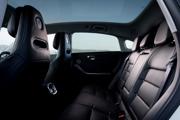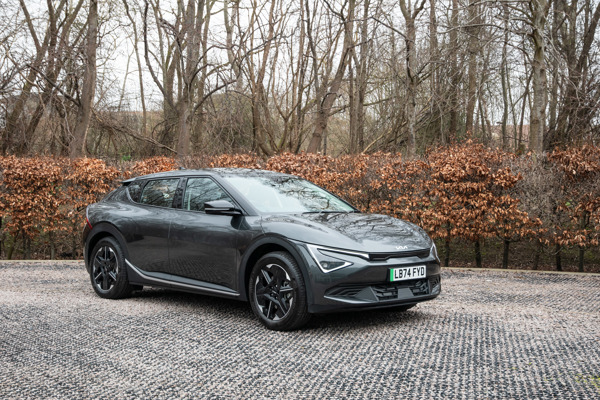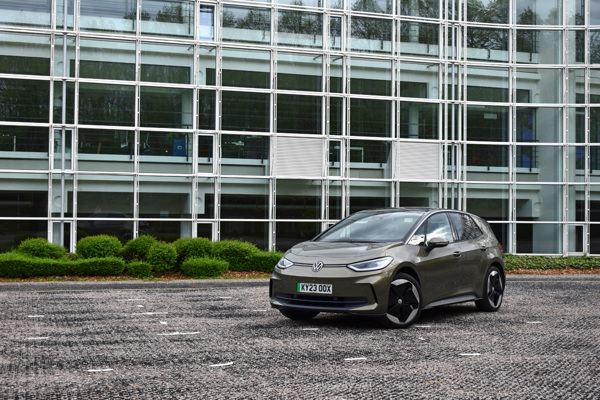Review
Smart has got a lot of things right with the #3. It’s well priced, good to drive and offers a decent range. The infotainment system needs work and the safety aids aren’t the most driver-friendly on the market, however.
Overview
Smart refers to the #3 as an “SUV coupe”. The ‘SUV’ bit clearly relating to its plastic wheelarch cladding and the ‘coupe’ a nod to its sloping roofline.
In reality, it’s just a mid-size five-door car. It’s best to think of the #3 as a stretched out #1, with a lower, sleeker body. There are more than just cosmetic differences though, despite sharing a platform, Smart has altered the chassis settings so the car provides a more refined and sportier drive.
The #3’s natural pool of rivals includes the VW ID 3, Cupra Born and Renault Megane. But when you factor in range, performance and specification, it sits closer to premium-badge models. There’s no direct competitor from the likes of Audi, BMW or Mercedes at this price point, giving Smart a unique market position.

We’d liken the #3 to an electric alternative to the traditional diesel compact executive. Sitting in the sub-£40k price band makes it great option for someone who’s coming out of a four-year lease on a BMW Series or Mercedes C-Class, where no direct electric competitor sits in their banding.
While the car’s underpinnings come from Geely, the Smart #3’s exterior and interior design was largely handled by Mercedes. The styling cues are evident, giving the car real ‘baby Merc’ vibes.
Pricing starts at £32,950 and the line-up consists of four trim grades, two battery sizes and two power outputs.
Comfort and practicality
There’s a premium look and feel to the #3, which is apparent as soon as you step inside. The door handles emerge electrically, allowing to open the doors with their frameless windows. A spacious and airy cabin awaits, bathed in light from the panoramic glass roof.
While interior plastics are a mixed bag – some parts feel a little flimsy – the design and layout is great. At night there’s an abundance of ambient lighting, for which the colour can be adjusted.
There’s multiple storage compartments in the raised centre console, which also houses a large open space beneath.

The front seats are electrically adjustable and heated, offering high levels of comfort for long journeys.
In the rear, space is very generous. The legroom is more akin to a luxury saloon than a compact model.
Boot space is rated at 370 litres, which at the lower end of the #3’s rival pool. There’s a handy storage compartment beneath the boot floor, for storing the charging cable, but due to the sloping rear end, outright carrying capacity is affected.
Safety and technology
Dominating the Smart’s dashboard is a large central touchscreen, which delivers all the on-board functions.
Smart has gone heavy with its reliance on the display, integrating even basic controls like the door mirror adjustments.
We’re please that, at least, there’s a separate screen in front of the driver for the speedometer, range and trip computer information.
The high level of specification fitted to all Smart #3 derivatives is impressive. Features like adaptive cruise control, blind-spot monitoring, 360-degree camera, parking sensors and front and rear collision mitigation come as standard.
While having all this kit is a boon, the delivery of some of the systems is poor. For starters, the central touchscreen’s user interface is poorly designed and makes finding certain functions quite difficult.

Some of the safety systems can be particularly frustrating too. The driver distraction warning, which uses a camera to monitor the driver’s eye position, is far to sensitive and sets off annoying beeps and bongs far too often. Usually this happens when you’re trying to make a simple adjustment to something using the touchscreen – if Smart thinks looking at the screen is so dangerous, why has it put every possible setting in there?
The lane keeping system is particularly aggressive and, depending on how you set it up, will beep, vibrate the steering wheel or even yank it to correct the car’s trajectory.
If you want to disable these systems it needs to be done each time you re-start the car, along with the intelligent speed limit warning – another incessant beeping! But, Smart has buried the setting among a myriad of other options. It takes far too long to switch off, or adjust, these systems.
Hopefully a future software update will sort out some of these gripes, because the Smart #3 is an otherwise very likeable car.
Driveability and range
Now we get to the good stuff. The Smart #3 is a really good car to drive. It has excellent performance, good real-world efficiency and tidy handling.
The model line-up starts with the Pro, which has a 49kWh battery and a 202-mile range. The Pro + and Premium use a 62kWh unit. Pro + has a range of 270 mile, while Premium manages 283 miles thanks to the inclusion of a heat pump.
All these versions use a 270PS electric motor, giving a rapid 0-62mph time of 5.8 seconds. With power going the rear wheels, the single motor #3 models are agile and refined. Acceleration is immediate and punchy from a dead stop as well as on the move.

In our experience, 4.0mi/kWh is achievable with careful driving. We saw 3.5 over a brisk 170-mile journey. We’d expect a real-world range of 220 – 250 miles from the larger battery and around 180 from the smaller unit.
Brabus models pair the same 62kWh battery with a twin-motor all-wheel-drive powertrain that develops a mammoth 428PS. Prepare to keep up with supercars in this model, which manages 0-62mph in 3.7 seconds. The official range is 258 miles. We’d expect closer to 200.
The smaller battery has 130kW fast charging and a 7.4kW AC charger, while the larger battery has 150kW fast charging. Premium and Brabus versions also get a 22kW AC charger.
Company car tax and running costs
The Smart #3 is a compelling company car choice. It is priced among a pool of mainstream rivals but offers the performance, driveability and specification of far more expensive premium models.
We’d go for the Premium, at a snip under £40,000 it should sit in a reasonable banding for most drivers that are used to having a premium-badged saloon.
Company car tax rates sit at 2% across the board, with 20% taxpayers facing bills of £11 - £15 per month.
Running costs are impressive, too. At 55p per mile (four-years/80k), the #3 Premium will cost businesses less than a BMW iX1 or a Mercedes EQA.
Specs
| Manufacturer | Smart |
| Model | Hashtag 3 Estate |
| Specification | Smart Hashtag 3 Estate 200kW Pro 49kWh 5dr Auto |
| Model Year | 2024.00 |
| Annual VED (Road tax) | £10 |
| BIK List Price | £33,895 |
| Range | 202.00mile(s) |
| CO2 | N/A |
| BIK Percentage | 2% |
| Insurance Group | N/A |
| CC | 1 |
| Fuel Type | Electric |
| Vehicle Type | Medium car |
| Luggage capacity (Seats up) | 370litres |
| Doors | 5 |
Running Costs
| P11D | £33,895 |
| Cost per mile | 40.51ppm |
| Residual value | £14,950 |
| Insurance group | N/A |
| Fuel Type | Electric |
| Cost per mile | 119.25ppm |
| Fuel | 4.01ppm |
| Depreciation | 112.75ppm |
| Service maintenance and repair | 2.49ppm |
Rivals
Info at a glance
-
P11D Price
£33,895
-
MPG
N/A (WLTP) -
CO2 Emissions
N/A -
BIK %
2% -
Running cost
3 Year 60k : £14,950 4 Year 80k : £12,175 -
Fuel Type
Electric -
Range
202.00mile(s)

































